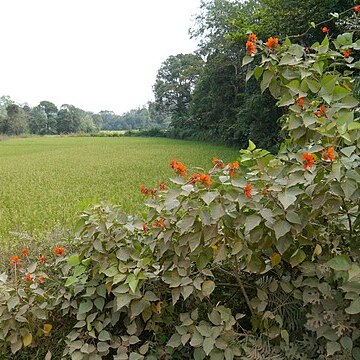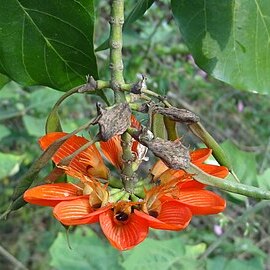A tall tree. It grows to 15-23 m high. Some kinds have prickles and some do not. The leaves are alternate and have 3 leaflets. The leaflets are smooth. The side 2 leaflets are round and 10-20 cm long. The end leaflet is larger. The flowering groups are 22 cm long. The flowers are red. The fruit are pods 10-14 cm long and 2-2.5 cm wide. They contain 1-5 seeds.


